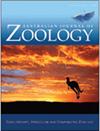沙蜂(膜翅目:蚁科)生境与种群防御不动策略
IF 1
4区 生物学
Q3 ZOOLOGY
引用次数: 0
摘要
摘要许多动物物种“装死”或装死(在某些情况下称为强直不动)作为对抗捕食者的防御策略,包括一些蚂蚁,尽管触发和持续时间尚不清楚。2019-2020年的森林大火烧毁了半个袋鼠岛,我们在这些蚂蚁身上反复观察到这种假装死亡的行为,这些蚂蚁占据了部署在袋鼠岛上的侏儒负鼠巢箱。759个蝙蝠和侏儒负鼠盒子(901个洞)中的大多数都在烧焦的地面上。在监测访问期间对13种不同属性进行的3312个箱腔检查中,40个中有28个(南澳大利亚第一)发生在未燃烧的极度濒危窄叶Mallee林地群落中,7个发生在邻近的含有窄叶Mallee的Mallee群落中,3个在杯胶未燃烧的栖息地中,2个在燃烧的地面上的一个箱腔中。火灾可能影响了物种的丰富和重建。在盒子里,长角鼩鼱(polyrhachhis femorata)采取了一种令人惊讶的防御性静止策略,因为它不仅是在面对潜在捕食者时采取的,而且是在整个种群中采取的。假装死亡的行为由堵塞盒子入口补充。巢箱可以用来研究这种鲜为人知的物种的神秘行为,尽管频繁的观察可能导致蚂蚁放弃巢穴。本文章由计算机程序翻译,如有差异,请以英文原文为准。
Polyrhachis femorata (Hymenoptera: Formicidae) habitat and colony defensive immobility strategy
Abstract. Many animal species ‘play dead’ or feign death (in some cases called tonic immobility) as a defence strategy against predators, including some ants, although triggers and durations are poorly understood. We repeatedly observed such death-feigning behaviour in Polyrhachis femorata ants that occupied pygmy-possum nest boxes deployed on Kangaroo Island following the 2019–2020 bushfires that burnt half of the island. Most of the 759 bat and pygmy-possum boxes (901 cavities) were on burnt ground. In 3312 box cavity checks on 13 diverse properties during monitoring visits, 28 of 40 P. femorata records (first for South Australia) occurred in unburnt Critically Endangered Narrow-Leaf Mallee Woodland community, seven in adjacent mallee community containing narrow-leaf mallee, three in cup gum unburnt habitat, and two in one box on burnt ground. Fire may have affected the abundance and re-establishment of the species. Polyrhachis femorata engages in a surprising defensive immobility strategy in boxes, since it is not only undertaken by individuals facing a potential predator, but also by entire colonies. The death-feigning behaviours were complemented by plugging box entrances. Nest boxes may be used to study this mysterious behaviour in this poorly known species, although frequent observation could lead to nest abandonment by the ant.
求助全文
通过发布文献求助,成功后即可免费获取论文全文。
去求助
来源期刊
CiteScore
2.40
自引率
0.00%
发文量
12
审稿时长
>12 weeks
期刊介绍:
Australian Journal of Zoology is an international journal publishing contributions on evolutionary, molecular and comparative zoology. The journal focuses on Australasian fauna but also includes high-quality research from any region that has broader practical or theoretical relevance or that demonstrates a conceptual advance to any aspect of zoology. Subject areas include, but are not limited to: anatomy, physiology, molecular biology, genetics, reproductive biology, developmental biology, parasitology, morphology, behaviour, ecology, zoogeography, systematics and evolution.
Australian Journal of Zoology is a valuable resource for professional zoologists, research scientists, resource managers, environmental consultants, students and amateurs interested in any aspect of the scientific study of animals.
Australian Journal of Zoology is published with the endorsement of the Commonwealth Scientific and Industrial Research Organisation (CSIRO) and the Australian Academy of Science.

 求助内容:
求助内容: 应助结果提醒方式:
应助结果提醒方式:


